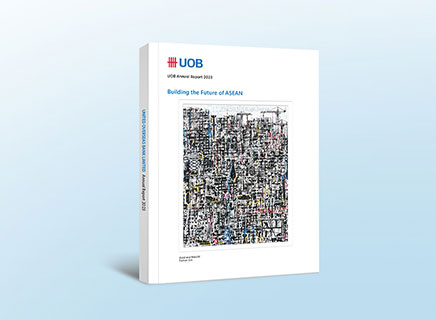Scaling and growing in ASEAN? Find out how you can better navigate the challenges of doing so with this report.
Investments into financial technology (FinTech) firms in ASEAN have rebounded in the first nine months of 2021 to reach an all-time high of US$3.5 billion, even as more people across ASEAN come online.
In our FinTech in ASEAN 2021: Digital Takes Flight report, we look at both the rising supply and demand for digital financial services in the region. Through primary research conducted with more than 3,000 respondents, we explore how the pandemic has changed the way consumers pay, invest, adopt new credit facilities like ‘buy now, pay later’, and more.

Taking flight: Funding shows remarkable rebound
In our FinTech in ASEAN 2020: Get up, Reset, Go! report, we noted that even as dealmaking went virtual, investors became more conservative in their approach, placing their bets behind more established FinTech players while hinting at a K-shaped recovery.
This year, despite recurring COVID-19 outbreaks, ASEAN’s FinTech sector has shown incredible resilience in terms of fundraising, which hit an all-time high of US$3.5 billion in the first nine months of 2021.
Here, we review investments into the FinTech industry in the six biggest ASEAN economies (Indonesia, Malaysia, the Philippines, Singapore, Thailand and Vietnam, which we refer to as ‘ASEAN-6’).
Historic high driven by mega-rounds
Funding rebounded from a dip in 2020 to post a record US$3.5 billion up until September 2021. There were 13 mega-rounds (deals worth US$100 million and above) amounting to US$2 billion. The average deal size increased from US$9 million in 2020 to US$21 million in YTD 2021.
Singapore and Indonesia continue to lead in FinTech funding
Singapore led FinTech funding numbers, garnering 44 per cent of the total amount. Funding deals grew by 32 per cent to 167 deals, with almost half the deals going to Singapore-based FinTech firms. Indonesia made up a quarter of deals, with Vietnam and Malaysia in joint third.
Payments remains the most funded FinTech category in ASEAN
Across ASEAN, the payments category received the most funding at US$1.9 billion, followed by investment tech at US$457 million and cryptocurrency at US$356 million. The latter two grew 6x and 5x from 2020 figures, respectively.
Slowing growth in the number of FinTech firms
Though ASEAN’s FinTech industry has been growing for the past decade, growth in new FinTech firms has slowed with the maturing industry, as late-stage companies attract more investor dollars.
Payment businesses make up the majority of FinTech firms, but alternative lending and crypto firms are catching up
Payments continues to lead the types of FinTech firms in most ASEAN-6 countries. In Singapore, cryptocurrency firms came in top at 25 per cent of total FinTech firms, whereas in Thailand, alternative lending firms led at 21 per cent.
Now onboarding: Digital financial services go mainstream
COVID-19 has accelerated the shift of the ASEAN consumer online, which has led to greater adoption of, and demand for, digital financial services. In Chapter 1, we glimpsed the supply side, with investments into payments soaring followed by strong growth in investment tech and cryptocurrency.

To gauge the demand for such services, we asked 3,086 consumers across ASEAN-6 about their financial behaviours and how they are changing. Our online survey findings are grouped by the five top-funded consumer categories: payments, investments, cryptocurrencies, lending and insurance.
In the following section, we explore in detail the ASEAN consumer’s payment preferences, investing habits, and comfort with the use of data for personalised insurance premiums.
Digital payments
The growth of payments-related FinTech firms over the past few years has led to a surge in digital payments solutions in ASEAN, particularly e-wallets.
E-wallets have become central to personal digital finance, surpassing credit/debit cards as the most used payment method behind cash—six in 10 respondents have used e-wallets in the past three months.
One in five respondents has used an e-wallet to transfer money overseas, with higher usage in Vietnam and Thailand.
However, not all markets have embraced e-wallets to the same extent, due to a strong and established local digi-banking presence. Our survey showed that debit/credit cards are the payment methods used most often in Singapore (56 per cent) and Malaysia (30 per cent)—the highest within ASEAN-6.
Digital insurance
People's connected devices and online activity can tell insurance companies a lot about their lives—and what the future may hold. With increasing amounts of data being captured across multiple platforms, how do ASEAN consumers feel about their digital footprints being used to customise insurance premiums?
We found that many respondents (almost nine in 10) are willing to share some data with insurers, particularly fitness tracker and online shopping data. Social media data topped the list in Thailand (55 per cent), whereas dining and food delivery data topped the list in the Philippines (59 per cent). In contrast, respondents in Indonesia and Singapore are least likely to share data.
Digital investing
Investment tech has flourished throughout COVID-19 as people stayed home and, in some cases, invested money they would otherwise have spent on travel and other forms of entertainment. Almost 60 per cent of respondents said they have invested using a digital investing platform.
Although traditional online brokerages remain the preferred platform for investing, our survey showed healthy interest in the use of cryptocurrency exchanges, investment tech platforms and robo-advisors among retail investors.

Looking ahead: What’s next for embedded finance?
From fundraising to the future face of FinTech in ASEAN, we look at several promising trends.
Assuming this continues into the near future, Singapore would serve as a fundraising centre leveraging its developed and regulated financial markets, whereas Indonesia’s market size would draw FinTechs and investors alike. Other ASEAN nations would also be of interest as their local FinTech landscapes develop.
Future ASEAN FinTech landscape
Singapore and Indonesia are currently the two markets in the region that most investors and FinTechs focus on. The former stands out for the maturity of its financial markets and regulator; the latter for the market potential it offers.
Regional CBDCs
Various central banks in ASEAN are experimenting with Central Bank Digital Currencies (CBDCs) and other forms of cross-border payment. Having centralised institutions drive the use and adoption of digital currencies in ASEAN stands in contrast to other markets, where the development of digital currencies is largely being driven by private enterprise.
Should greater financial integration across ASEAN happen, central bank-backed initiatives would likely remain a driving force. Such adoption could come in the form of a regional ASEAN stablecoin, with each ASEAN nation having its own CBDC which interacts with the ASEAN stablecoin to facilitate cross-border payments. The distributed ledger technology behind this could then be applied to other areas, such as the tokenisation of securities to further cross-border investments along with continuous trading on exchanges, smart contracts to promote areas such as carbon credit trading and other environmental, social and governance (ESG) initiatives, and more.
Digital adoption to keep increasing
The massive shift to online financial services as consumers adapt to the pandemic—and the subsequent changes across business and society—are unlikely to be wound back as economies and countries start opening up.
The shift to digital is likely to continue proliferating among established financial institutions and FinTechs, with many reporting that their plans have been accelerated by a few years with the increase in digital users. Steady progress has been made in digitising Know Your Customer (KYC), Anti-Money Laundering (AML), and other client identification processes, so much so that new customer verification can now be done remotely across some parts of ASEAN. As digital onboarding becomes more seamless, we will likely see an upwards spiral of wider FinTech adoption as well as more innovative services being provided.
Explore other reports

FinTech in ASEAN 2019: From Start-up to Scale-up

FinTech in ASEAN 2018: The Next Wave of Growth
Find out how you can ride on the growth opportunities in ASEAN with this report.

State of FinTech in ASEAN (2017)
ASEAN's growing FinTech industry is creating opportunities for the region's unbanked and underserved population.









